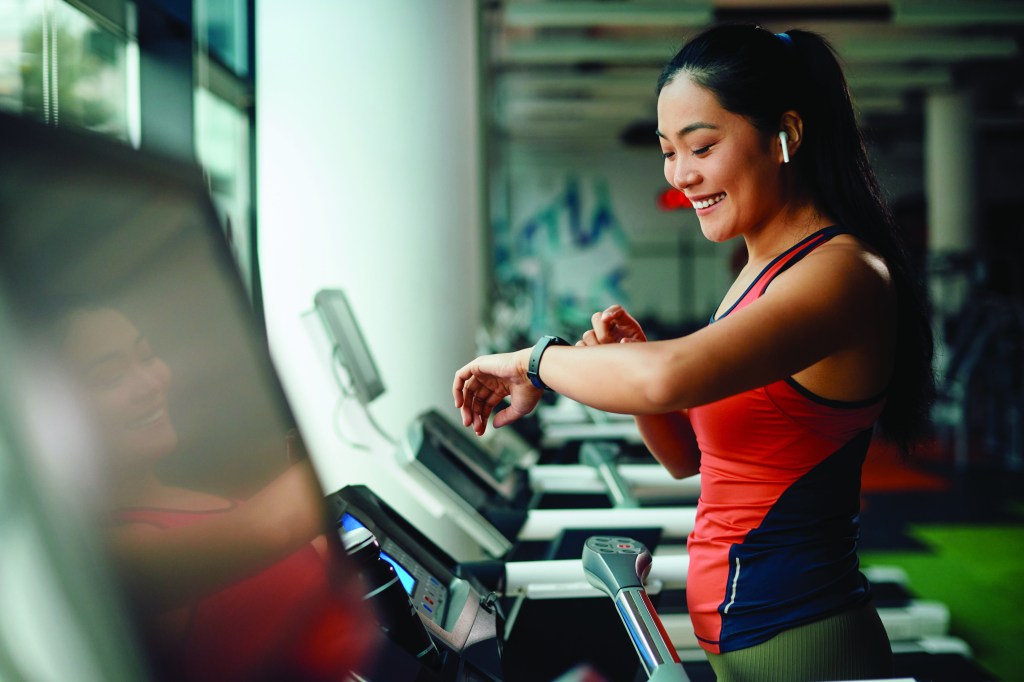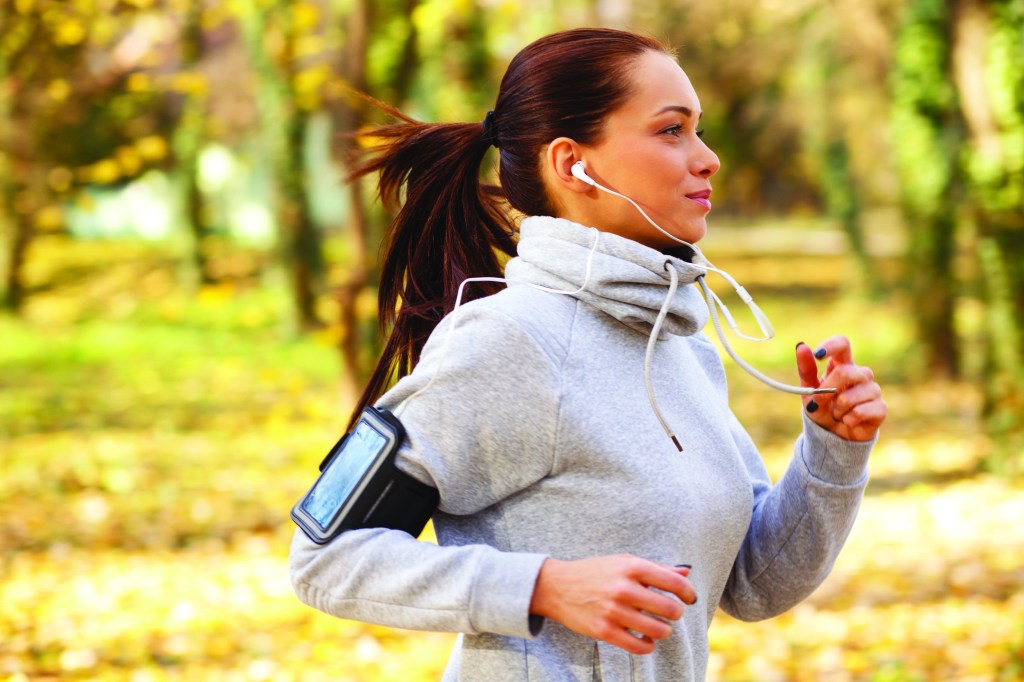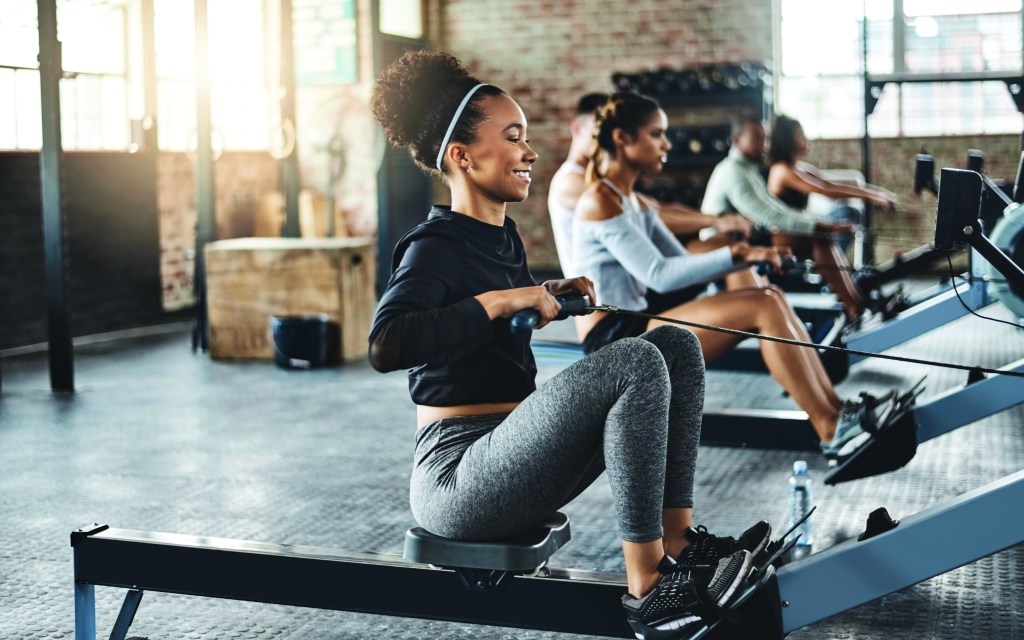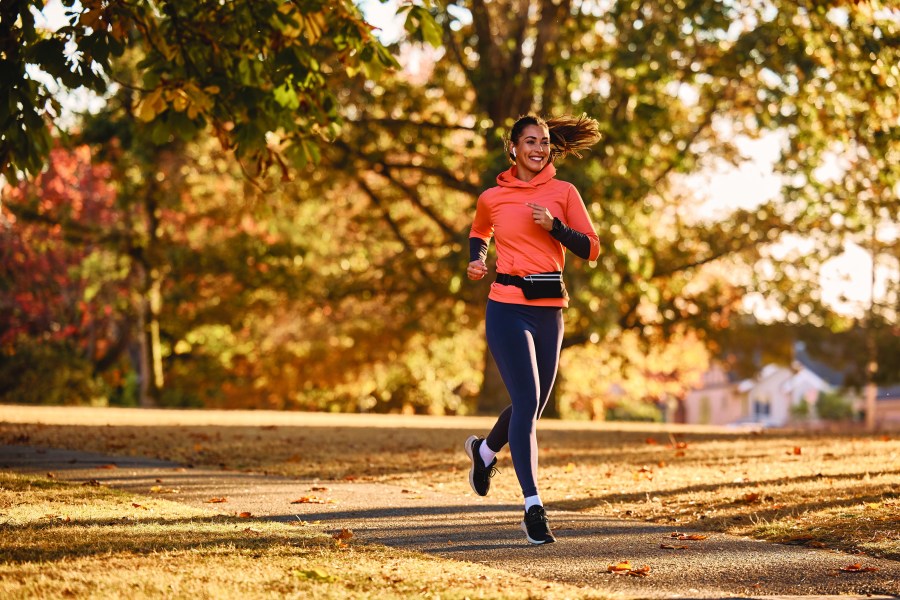A growing number of fitness fans are realising the benefits of the slower-paced cardio method known as LISS (low-intensity steady-state) training. PT Lucy Miller explains why it’s not just for endurance athletes
If you’re used to doing high-intensity training (HIIT) sessions, slowing down can feel counterintuitive and, yet, that’s exactly what LISS (low-intensity steady-state cardio) is – slowing down. ‘It’s a less demanding workout that requires steady movement – nothing too strenuous and without the need for rushing from one exercise to another,’ says Olga Jukowska, physiotherapist at Bupa Health Clinics (bupa.co.uk). More and more athletes are realising the power of incorporating LISS cardio into their training programmes, but you don’t need to be a long-distance runner to reap the rewards.
‘LISS cardio is continuous exercise that elevates your heart rate and oxygen use,’ explains Olga. ‘It’s typically done for 30-to-60 minutes to reach a “steady state”, and strengthens your heart and lungs over a longer period compared to HIIT. As an aerobic exercise, LISS taps into aerobic energy, using oxygen to convert fat into fuel and firing up your mitochondria – those microscopic power stations inside every cell.’
In practice, this means moving at a pace where conversation is still possible but your body is working hard enough to build stamina, aid recovery and support overall cardiovascular health. Think light jogging, brisk walking, easy cycling, rowing or swimming.
LISS vs HIIT
What’s the difference between LISS and HIIT? LISS boosts cardiovascular health and improves endurance over time, without placing the same strain on your muscles and joints as high-impact training. It’s also a smart way to build a solid fitness foundation before incorporating in more intense workouts.
‘During this kind of workout, you’ll use around 50-65 per cent of your maximum heart rate. If you have an exercise tracker like a watch or chest strap, you’ll see your heart rate sits in and around zone two,’ explains Olga. ‘This helps build fitness and stamina over time, as your body uses oxygen to burn free fatty acids for fuel. It’s also a great option if you want to prepare for more intense training and eventually step it up a notch.’
By contrast, HIIT pushes your heart rate close to its maximum for short bursts, followed by recovery before repeating. This challenges your body in a very different way from LISS. ‘You’ll use a lot of muscle glycogen and produce lactate during HIIT,’ adds Olga. ‘HIIT also has an “after-burn” effect, meaning your body continues to use up calories for 30-to-60 minutes after your workout. LISS’s after-burn is much lower and your body typically returns to its resting state within five-to-10 minutes. This quick recovery means you’re ready to move again sooner. It also supports hormone balance and helps maintain consistent training long term.’

LISS benefits
The advantages of LISS extend well beyond calorie burn. Regular sessions can improve cardiovascular fitness, ease joint pain, support weight management and even lift mood. ‘It’s especially helpful if you’re returning to exercise after a break, injury, pregnancy or a busy spell,’ says Olga. ‘LISS lets you reconnect with your body, build stamina at a steady pace and regain confidence without overwhelming your system.’
Another key benefit is its effect on stress and depression. As it helps regulate cortisol (the body’s primary stress hormone), researchers at Anglia Ruskin University found LISS to be kinder to your nervous and hormonal systems, making it particularly valuable for women during times of hormonal fluctuation or chronic stress.
Emerging research backs this up. A review in the National Library of Medicine found that steady-state training offers similar cardiovascular improvements to HIIT, with little difference in fat loss between the two approaches. Meanwhile, a study published in the Journal of the American College of Cardiology suggests women may not need to exercise at the same intensity as men to achieve comparable results. ‘Thanks to hormonal and physiological differences, women are often more efficient at burning fat during lower-intensity training,’ explains Olga. ‘So you may notice the same fat-burning benefits from LISS that a man might only get from a HIIT class, especially when it’s done consistently over weeks or months.’ Ready to give it a go? Turn the page for eight ways to get your LISS on…

Switch from HIIT to LISS
If you thrive on pushing hard, swapping intervals for steady effort can feel almost too easy. But LISS isn’t about slacking – it’s about supporting your body between tough workouts and balancing intensity with recovery. Here are eight awesome LISS workouts to try.
Light jogging
Simple, accessible and effective, and an activity that can be done outdoors or on a treadmill at a steady pace. ‘Great for fat burning, cardiovascular health and mental clarity, light jogging or a power walk is perfect during your lunch break or after work to loosen stiff joints and reset posture,’ says Olga.
Cardio machines
Hop on the cross trainer, stepper or rower, and stick to a moderate pace for around 30 minutes. ‘Even if you’re a HIIT fan, ideally you shouldn’t be doing it more than three times a week,’ adds Olga. ‘Those other days are the perfect chance to slot in some LISS.’

Nordic hiking
Walking on nature trails with minimal elevation combines aerobic activity with the mood-boosting benefits of time outdoors. ‘Focus on 30-to-45 minutes of steady movement,’ says Olga. ‘And when you have more time at the weekend, an hour-long walk outdoors is a great way to reconnect with nature.’
Swimming
Continuous, moderate-paced lengths gently elevate your heart rate while offering full-body, joint-friendly resistance. ‘Think of LISS as active recovery,’ says Olga. ‘It gives your muscles and joints a break while still keeping you moving.’
Gentle cycling
Stationary or road cycling at a consistent pace builds endurance without taxing your joints. ‘Don’t forget to track your effort,’ says Olga. ‘The simplest way is the talk test: aim for a pace where you can comfortably
chat but not sing.’

Dancing
Olga suggests trying a choreographed class such as Zumba Gold or Dance Fitness for ‘continuous movement and fun, uplifting energy. This is your chance to choose joy over grind. The more enjoyable it feels, the easier it is to stay consistent.’
Pilates
While not traditional cardio, beginner-friendly Pilates sequences (mat-based or reformer) can provide continuous, low-intensity movement that supports mobility, stability and core strength. ‘Instead of chasing reps or PBs, the goal is sustainability, not exhaustion,’ explains Olga.
Rebounding
Gentle bouncing sessions support circulation and lymphatic flow without impact. ‘Most exercise can be made into LISS,’ says Olga. ‘It’s all about your pace and finding something you enjoy.’
TIP: Remember, LISS doesn’t need to replace your beloved HIIT sessions. ‘If you’re time-poor, you can blend the two into one workout,’ suggests Olga. ‘Start with a 10- to 15-minute LISS warm-up, add 15-to-20 minutes of HIIT, then finish with a 10-minute steady-state cool-down, such as walking, light cycling or mobility work. This combo gives you the best of both worlds and helps promote fat burn increase as well as support recovery.’









